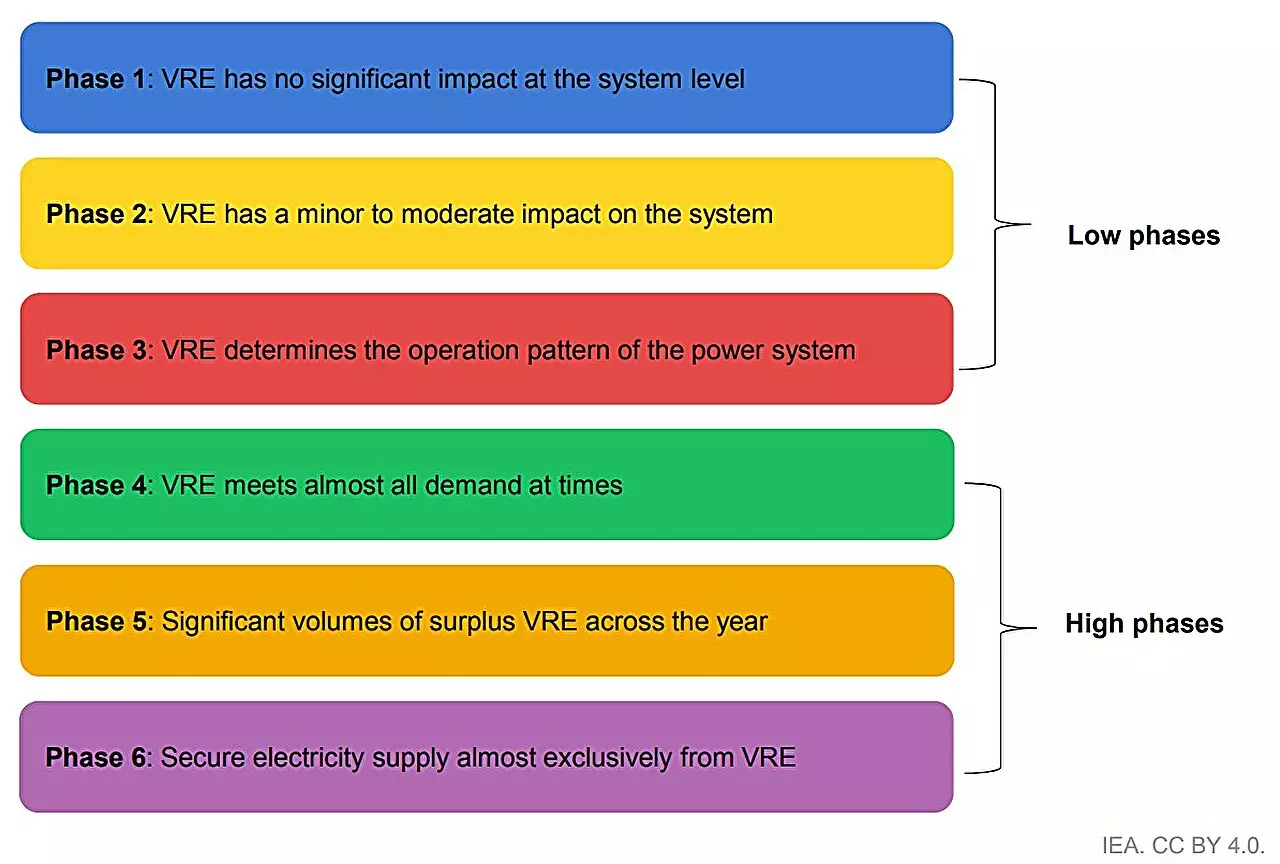In recent years, the transition towards renewable energy sources like solar photovoltaic (PV) and wind has seen an unprecedented acceleration. As highlighted in the International Energy Agency’s (IEA) latest report, “Integrating Solar and Wind: Global Experience and Emerging Challenges,” the global capacity for solar PV and wind energy has more than doubled between 2018 and 2023, paralleling an almost equivalent surge in their contributions to the electricity generation mix. This rapid expansion is overwhelmingly attributed to favorable government policies coupled with substantial reductions in technology costs. The pressing challenge, however, lies not in the generation itself, but in the integration of these variable renewable energy (VRE) sources into existing power systems.
As nations strive to combat climate change, solar and wind energy emerge as pivotal components in the decarbonization of the electricity sector. The report underscores the staggering reality that these technologies are responsible for two-thirds of the reductions in carbon dioxide (CO2) emissions while heading toward a net zero scenario by the middle of the century. To fully leverage the environmental benefits of these energy sources, however, there is an urgent need for cohesive integration within national and regional power systems. It’s not just about generating clean energy; it’s about making sure that this energy can be effectively distributed and used.
The IEA report delivers a stark warning: failure to act on integration could result in a significantly lower electricity output from solar and wind by 2030, by as much as 15%. This decline not only hampers climate goals but also jeopardizes energy security established through previous investments. The report’s author, Keisuke Sadamori, asserts that while the increase in renewable energy capacity is promising, countries will not capitalize on its full potential without substantial integration efforts. For policymakers, this paints a clear picture of the risks of complacency in an era where renewable resources are abundant yet underutilized.
A noteworthy aspect of the IEA report is its first-time comprehensive review of integration strategies across 50 power systems, collectively responsible for nearly 90% of global renewable energy generation. This stocktake reveals that nations with lower adoption rates of VRE in their energy mixes have the potential to contribute to two-thirds of generation growth by 2030. Fortunately, the most effective strategies do not necessarily require sweeping, systemic overhauls; rather, proactive, incremental improvements such as enhancing the flexibility of existing infrastructure and fine-tuning forecasting techniques are often adequate.
However, as the penetration level of various renewables rises, challenges start to multiply. Leading power systems including those in Denmark, Ireland, South Australia, and Spain are paving the path by demonstrating how to tackle these emerging obstacles. They have managed to adopt innovative solutions such as energy storage technologies and modernized electricity grids to accommodate the complexities of integrating fluctuating renewable outputs on both hourly and seasonal bases.
The report emphasizes that most technological interventions designed to mitigate the challenges associated with high levels of renewable integration are already established or in the final stages of development. What remains imperative is a shift in policy and regulatory frameworks to facilitate the adoption of these technologies, emphasizing the need for alignment between technical capabilities and governance structures.
As countries continue on this path of transition, there will also be a necessity for a paradigm shift in power system planning and operation. This shift must go beyond mere technological implementation; it requires a fundamental rethinking of how energy systems have historically been designed and managed. Policy-makers must be proactive, creating environments conducive to not just the uptake of renewables but their seamless integration into the fabric of energy networks worldwide.
As the global community pushes for a greener future, the importance of integrating solar and wind energy into existing power systems cannot be overstated. With the right policies in place and technologies deployed effectively, countries stand to gain not just from achieving sustainability goals but also from enhancing their energy security and economic resilience. The IEA’s report serves as both a wake-up call and a roadmap; it highlights the urgent need for action while offering guidance on navigating the multifaceted challenges that lie ahead. The pathway to a clean energy future is illuminated, but it demands our immediate attention and concerted effort.


Leave a Reply